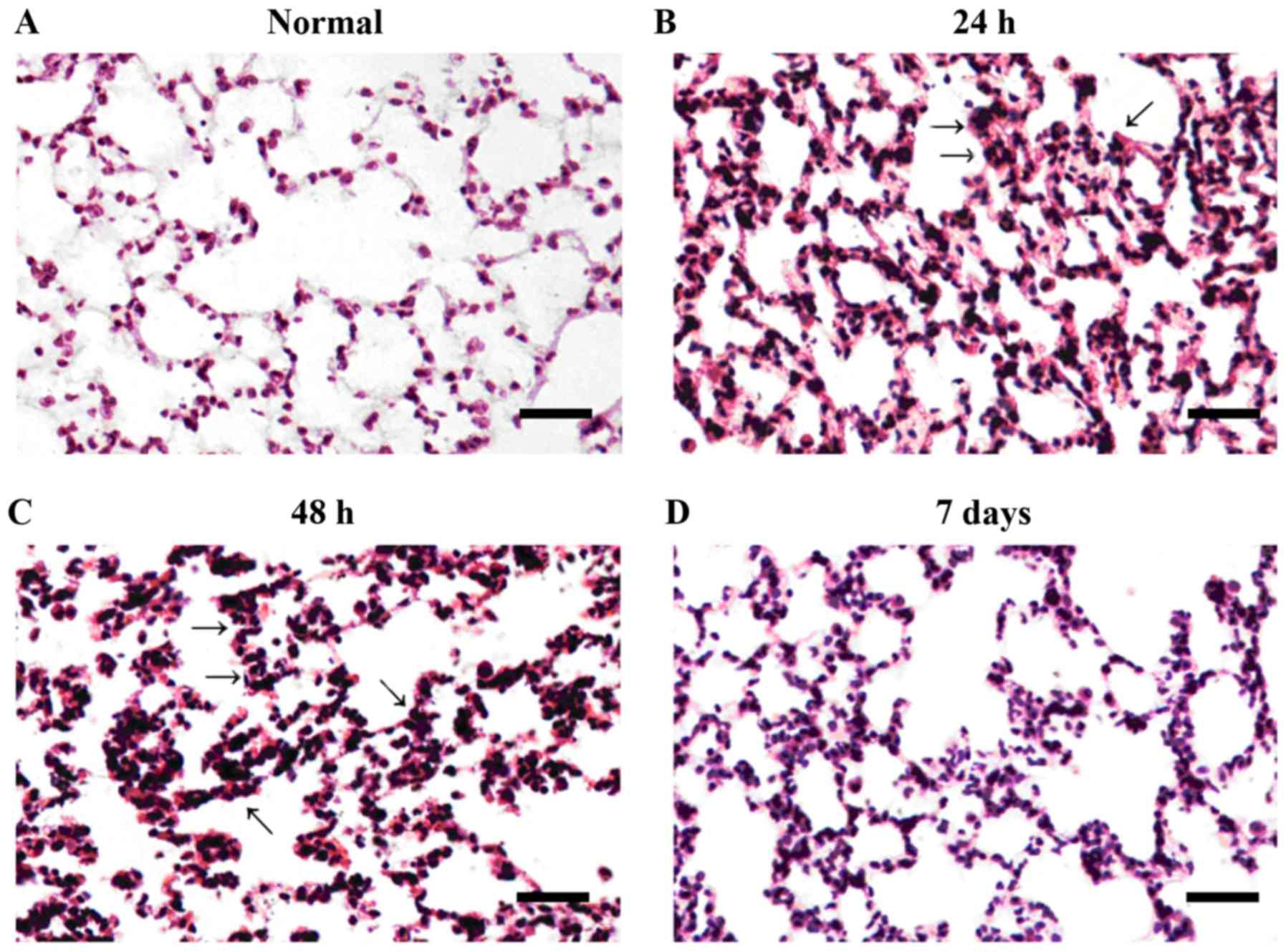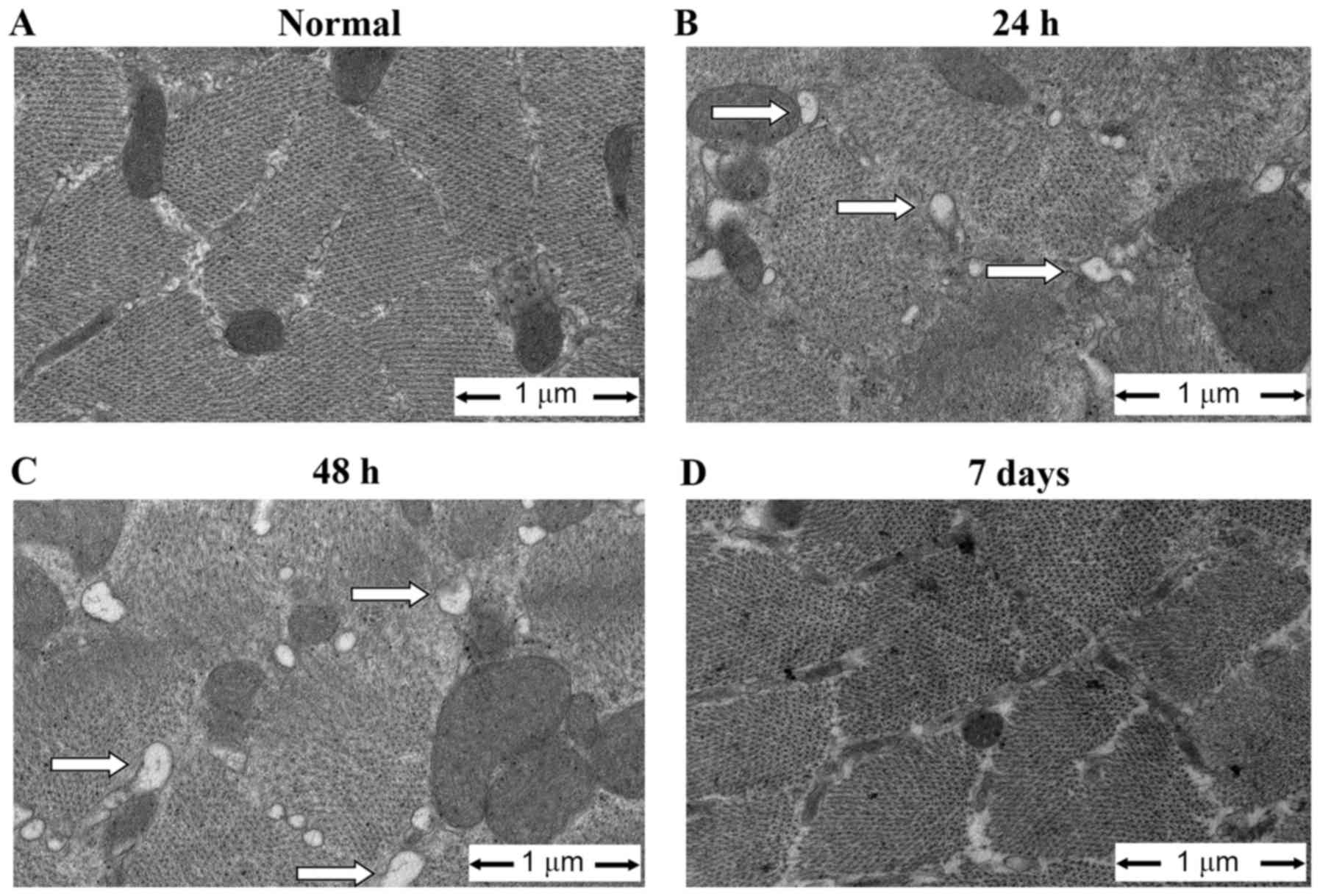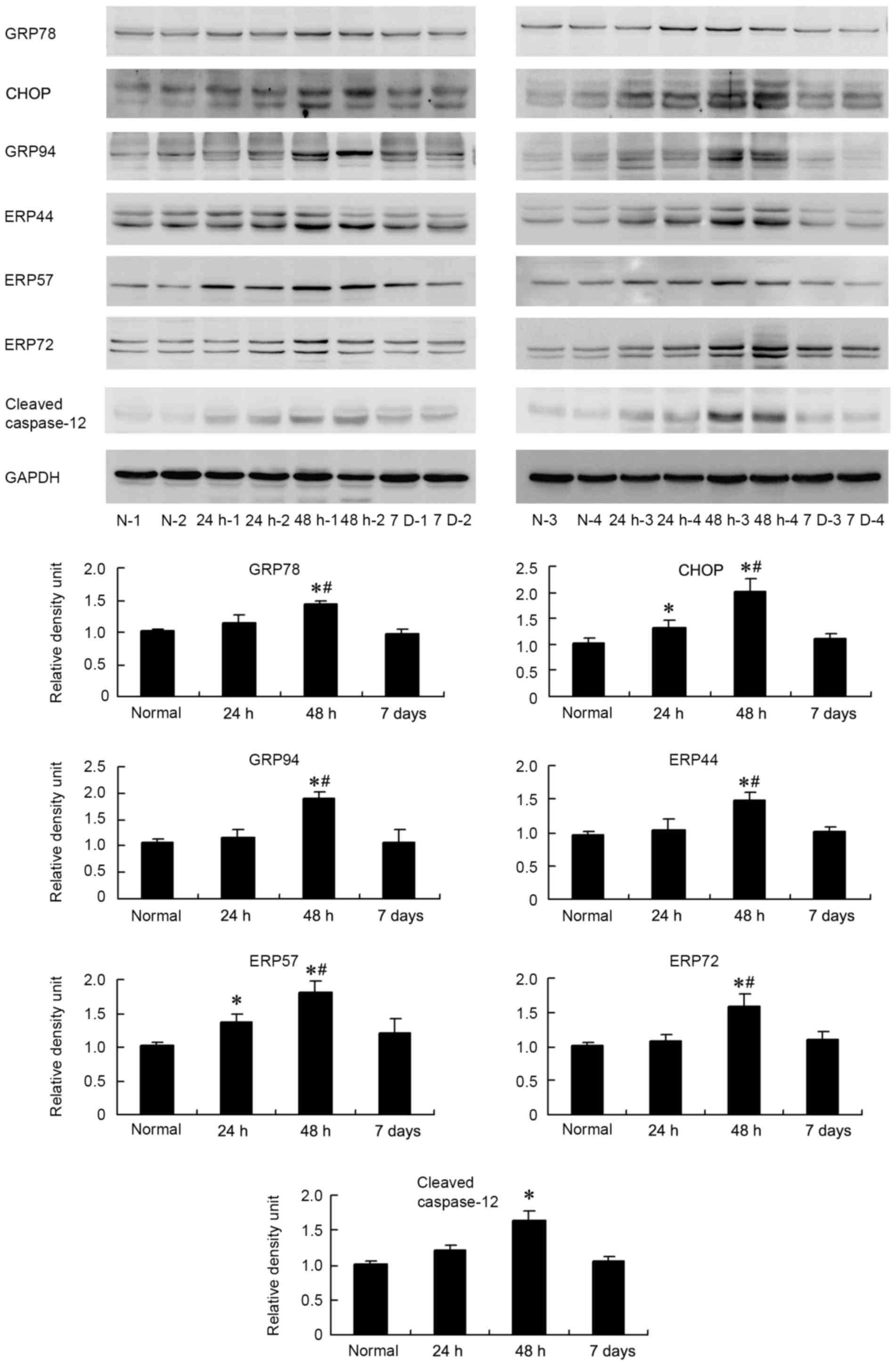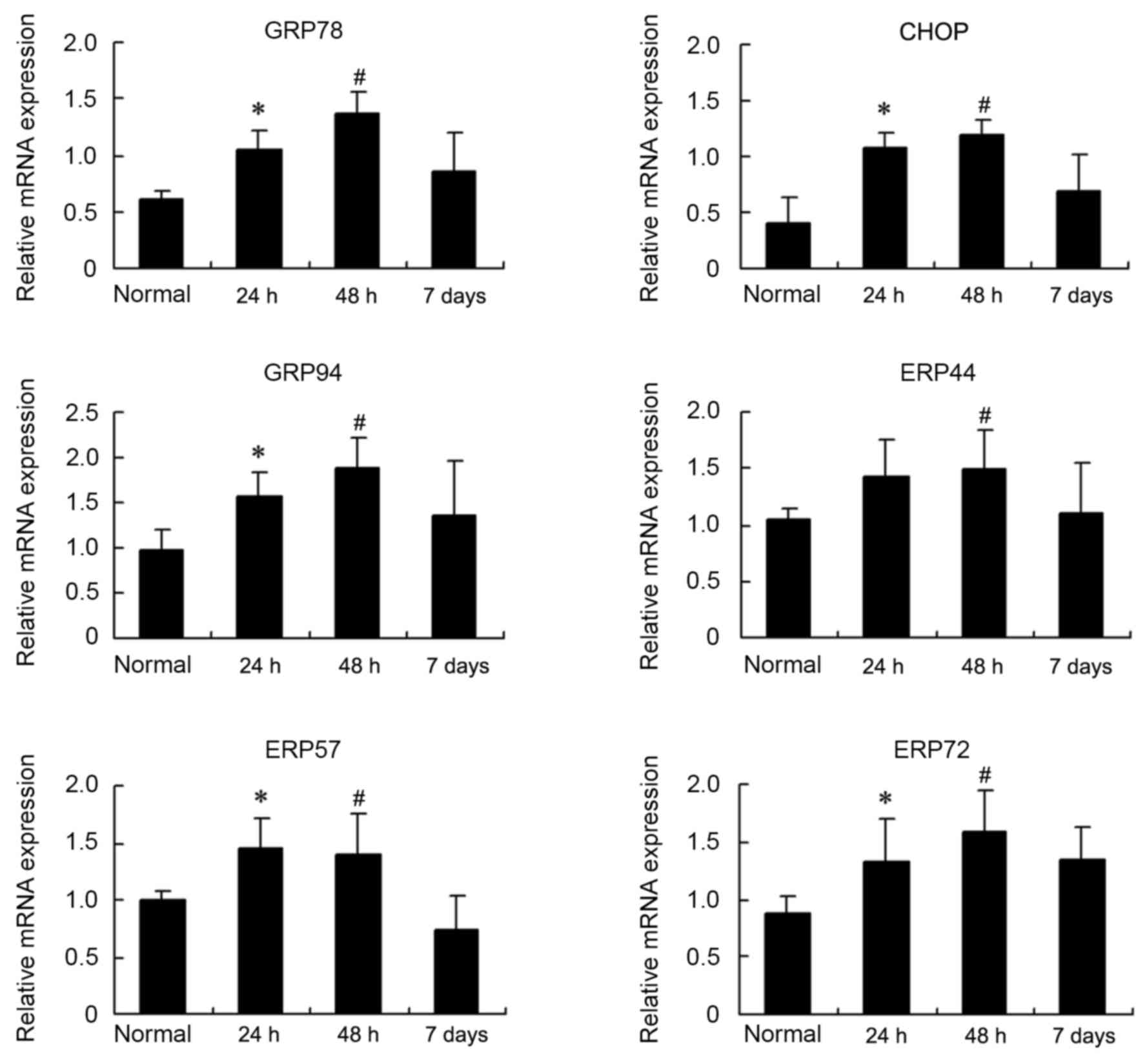|
1
|
Sprung CL, Annane D, Keh D, Moreno R,
Singer M, Freivogel K, Weiss YG, Benbenishty J, Kalenka A, Forst H,
et al: Hydrocortisone therapy for patients with septic shock. N
Engl J Med. 358:111–124. 2008. View Article : Google Scholar : PubMed/NCBI
|
|
2
|
Wilson TA, Legrand A, Gevenois PA and De
Troyer A: Respiratory effects of the external and internal
intercostal muscles in humans. J Physiol. 530:319–330. 2001.
View Article : Google Scholar : PubMed/NCBI
|
|
3
|
Supinski G, Nethery D, Stofan D and
DiMarco A: Comparison of the effects of endotoxin on limb,
respiratory, and cardiac muscles. J Appl Physiol (1985).
81:1370–1378. 1996.PubMed/NCBI
|
|
4
|
Shindoh C, Murakami Y, Shishido R, Sasaki
K, Nishio T and Miura M: Tulobuterol patch maintains diaphragm
muscle contractility for over twenty-four h in a mouse model of
sepsis. Tohoku J Exp Med. 218:271–278. 2009. View Article : Google Scholar : PubMed/NCBI
|
|
5
|
Lanone S, Taillé C, Boczkowski J and
Aubier M: Diaphragmatic fatigue during sepsis and septic shock.
Intensive Care Med. 31:1611–1617. 2005. View Article : Google Scholar : PubMed/NCBI
|
|
6
|
Supinski GS and Callahan LA: Calpain
activation contributes to endotoxin-induced diaphragmatic
dysfunction. Am J Respir Cell Mol Biol. 42:80–87. 2010. View Article : Google Scholar : PubMed/NCBI
|
|
7
|
Callahan LA and Supinski GS: Sepsis
induces diaphragm electron transport chain dysfunction and protein
depletion. Am J Respir Crit Care Med. 172:861–868. 2005. View Article : Google Scholar : PubMed/NCBI
|
|
8
|
Ron D and Walter P: Signal integration in
the endoplasmic reticulum unfolded protein response. Nat Rev Mol
Cell Biol. 8:519–529. 2007. View
Article : Google Scholar : PubMed/NCBI
|
|
9
|
Deniaud A, el dein O Sharaf, Maillier E,
Poncet D, Kroemer G, Lemaire C and Brenner C: Endoplasmic reticulum
stress induces calcium-dependent permeability transition,
mitochondrial outer membrane permeabilization and apoptosis.
Oncogene. 27:285–299. 2008. View Article : Google Scholar : PubMed/NCBI
|
|
10
|
Zhao L and Ackerman SL: Endoplasmic
reticulum stress in health and disease. Curr Opin Cell Biol.
18:444–452. 2006. View Article : Google Scholar : PubMed/NCBI
|
|
11
|
Li SY, Gilbert SA, Li Q and Ren J:
Aldehyde dehydrogenase-2 (ALDH2) ameliorates chronic alcohol
ingestion-induced myocardial insulin resistance and endoplasmic
reticulum stress. J Mol Cell Cardiol. 47:247–255. 2009. View Article : Google Scholar : PubMed/NCBI
|
|
12
|
Miki T, Miura T, Hotta H, Tanno M, Yano T,
Sato T, Terashima Y, Takada A, Ishikawa S and Shimamoto K:
Endoplasmic reticulum stress in diabetic hearts abolishes
erythropoietin-induced myocardial protection by impairment of
phospho-glycogen synthase kinase-3beta-mediated suppression of
mitochondrial permeability transition. Diabetes. 58:2863–2872.
2009. View Article : Google Scholar : PubMed/NCBI
|
|
13
|
Minamino T, Komuro I and Kitakaze M:
Endoplasmic reticulum stress as a therapeutic target in
cardiovascular disease. Circ Res. 107:1071–1082. 2010. View Article : Google Scholar : PubMed/NCBI
|
|
14
|
Zhang Y, Xia Z, La Cour KH and Ren J:
Activation of Akt rescues endoplasmic reticulum stress-impaired
murine cardiac contractile function via glycogen synthase
kinase-3β-mediated suppression of mitochondrial permeation pore
opening. Antioxid Redox Signal. 15:2407–2424. 2011. View Article : Google Scholar : PubMed/NCBI
|
|
15
|
Sassoon CS, Caiozzo VJ, Manka A and Sieck
GC: Altered diaphragm contractile properties with controlled
mechanical ventilation. J Appl Physiol (1985). 92:2585–2595. 2002.
View Article : Google Scholar : PubMed/NCBI
|
|
16
|
Sassoon CS, Zhu E, Fang L, Ramar K, Jiao
GY and Caiozzo VJ: Interactive effects of corticosteroid and
mechanical ventilation on diaphragm muscle function. Muscle Nerve.
43:103–111. 2011. View Article : Google Scholar : PubMed/NCBI
|
|
17
|
Wolthuis EK, Vlaar AP, Hofstra JJ, Roelofs
JJ, de Waard V, Juffermans NP and Schultz MJ: Plasminogen activator
inhibitor-type I gene deficient mice show reduced influx of
neutrophils in ventilator-induced lung injury. Crit Care Res Pract.
2011:2178962011.PubMed/NCBI
|
|
18
|
Rojas M, Woods CR, Mora AL, Xu J and
Brigham KL: Endotoxin-induced lung injury in mice: Structural,
functional, and biochemical responses. Am J Physiol Lung Cell Mol
Physiol. 288:L333–L341. 2005.PubMed/NCBI
|
|
19
|
Gupta N, Su X, Popov B, Lee JW, Serikov V
and Matthay MA: Intrapulmonary delivery of bone marrow-derived
mesenchymal stem cells improves survival and attenuates
endotoxin-induced acute lung injury in mice. J Immunol.
179:1855–1863. 2007. View Article : Google Scholar : PubMed/NCBI
|
|
20
|
Li J, Li D, Liu X, Tang S and Wei F: Human
umbilical cord mesenchymal stem cells reduce systemic inflammation
and attenuate LPS-induced acute lung injury in rats. J Inflamm
(Lond). 9:332012. View Article : Google Scholar : PubMed/NCBI
|
|
21
|
Jiao GY, Hao LY, Gao CE, Chen L, Sun XF,
Yang HL, Li Y and Dai YN: Reduced DHPRα1S and RyR1 expression
levels are associated with diaphragm contractile dysfunction during
sepsis. Muscle Nerve. 48:745–751. 2013. View Article : Google Scholar : PubMed/NCBI
|
|
22
|
Burke RE, Levine DN, Tsairis P and Zajac
FE III: Physiological types and histochemical profiles in motor
units of the cat gastrocnemius. J Physiol. 234:723–748. 1973.
View Article : Google Scholar : PubMed/NCBI
|
|
23
|
Livak KJ and Schmittgen TD: Analysis of
relative gene expression data using real-time quantitative PCR and
the 2(−Delta Delta C(T)) Method. Methods. 25:402–408. 2001.
View Article : Google Scholar : PubMed/NCBI
|
|
24
|
Khan MM, Yang WL and Wang P: Endoplasmic
reticulum stress in sepsis. Shock. 44:294–304. 2015. View Article : Google Scholar : PubMed/NCBI
|
|
25
|
Ma T, Han L and Hu WQ: Study of the role
of endoplasmic reticulum stress mediated apoptosis signal pathway
in sepsis-induced splenic lymphocyte apoptosis. Zhongguo Wei Zhong
Bing Ji Jiu Yi Xue. 21:48–50. 2009.(In Chinese). PubMed/NCBI
|
|
26
|
Narimatsu E, Nakayama Y, Sumita S, Iwasaki
H, Fujimura N, Satoh K and Namiki A: Sepsis attenuates the
intensity of the neuromuscular blocking effect of d-tubocurarine
and the antagonistic actions of neostigmine and edrophonium
accompanying depression of muscle contractility of the diaphragm.
Acta Anaesthesiol Scand. 43:196–201. 1999. View Article : Google Scholar : PubMed/NCBI
|
|
27
|
Supinski GS, Wang W and Callahan LA:
Caspase and calpain activation both contribute to sepsis-induced
diaphragmatic weakness. J Appl Physiol (1985). 107:1389–1396. 2009.
View Article : Google Scholar : PubMed/NCBI
|
|
28
|
Doi K, Leelahavanichkul A, Yuen PS and
Star RA: Animal models of sepsis and sepsis-induced kidney injury.
J Clin Invest. 119:2868–2878. 2009. View
Article : Google Scholar : PubMed/NCBI
|
|
29
|
Peng H, Chen Q and Tan Y: Frequent
ejaculation associated free radical and lactic acid accumulation
cause noninfectious inflammation and muscle dysfunction: A
potential mechanism for symptoms in Chronic Prostatitis/Chronic
Pelvic Pain Syndrome. Med Hypotheses. 73:372–373. 2009. View Article : Google Scholar : PubMed/NCBI
|
|
30
|
Supinski GS and Callahan LA: Free
radical-mediated skeletal muscle dysfunction in inflammatory
conditions. J Appl Physiol (1985). 102:2056–2063. 2007. View Article : Google Scholar : PubMed/NCBI
|
|
31
|
Supinski G: Free radical induced
respiratory muscle dysfunction. Mol Cell Biochem. 179:99–110. 1998.
View Article : Google Scholar : PubMed/NCBI
|
|
32
|
Liu SH, Lai JL, Yang RS and Lin-Shiau SY:
Nitric oxide is not involved in the endotoxemia-induced alterations
in Ca2+ and ryanodine responses in mouse diaphragms.
Naunyn Schmiedebergs Arch Pharmacol. 366:327–334. 2002. View Article : Google Scholar : PubMed/NCBI
|
|
33
|
Supinski GS and Callahan LA:
Double-stranded RNA-dependent protein kinase activation modulates
endotoxin-induced diaphragm weakness. J Appl Physiol (1985).
110:199–205. 2011. View Article : Google Scholar : PubMed/NCBI
|
|
34
|
Bohnert KR, Gallot YS, Sato S, Xiong G,
Hindi SM and Kumar A: Inhibition of ER stress and unfolding protein
response pathways causes skeletal muscle wasting during cancer
cachexia. FASEB J. 30:3053–3068. 2016. View Article : Google Scholar : PubMed/NCBI
|
|
35
|
Deldicque L, Bertrand L, Patton A,
Francaux M and Baar K: ER stress induces anabolic resistance in
muscle cells through PKB-induced blockade of mTORC1. PLoS One.
6:e209932011. View Article : Google Scholar : PubMed/NCBI
|
|
36
|
Chalil S, Pierre N, Bakker AD, Manders RJ,
Pletsers A, Francaux M, Klein-Nulend J, Jaspers RT and Deldicque L:
Aging related ER stress is not responsible for anabolic resistance
in mouse skeletal muscle. Biochem Biophys Res Commun. 468:702–707.
2015. View Article : Google Scholar : PubMed/NCBI
|
|
37
|
Hrincius ER, Liedmann S, Finkelstein D,
Vogel P, Gansebom S, Samarasinghe AE, You D, Cormier SA and
McCullers JA: Acute lung injury results from innate sensing of
viruses by an ER stress pathway. Cell Rep. 11:1591–1603. 2015.
View Article : Google Scholar : PubMed/NCBI
|
|
38
|
Inagi R, Nangaku M, Onogi H, Ueyama H,
Kitao Y, Nakazato K, Ogawa S, Kurokawa K, Couser WG and Miyata T:
Involvement of endoplasmic reticulum (ER) stress in podocyte injury
induced by excessive protein accumulation. Kidney Int.
68:2639–2650. 2005. View Article : Google Scholar : PubMed/NCBI
|
|
39
|
Yao X, Li Y, Cheng X and Li H: ER stress
contributes to alpha-naphthyl isothiocyanate-induced liver injury
with cholestasis in mice. Pathol Res Pract. 212:560–567. 2016.
View Article : Google Scholar : PubMed/NCBI
|
|
40
|
Mori K: Tripartite management of unfolded
proteins in the endoplasmic reticulum. Cell. 101:451–454. 2000.
View Article : Google Scholar : PubMed/NCBI
|
|
41
|
Travers KJ, Patil CK, Wodicka L, Lockhart
DJ, Weissman JS and Walter P: Functional and genomic analyses
reveal an essential coordination between the unfolded protein
response and ER-associated degradation. Cell. 101:249–258. 2000.
View Article : Google Scholar : PubMed/NCBI
|
|
42
|
Vattemi G, Engel WK, McFerrin J and
Askanas V: Endoplasmic reticulum stress and unfolded protein
response in inclusion body myositis muscle. Am J Pathol. 164:1–7.
2004. View Article : Google Scholar : PubMed/NCBI
|
|
43
|
Dihazi H, Dihazi GH, Bibi A, Eltoweissy M,
Mueller CA, Asif AR, Rubel D, Vasko R and Mueller GA: Secretion of
ERP57 is important for extracellular matrix accumulation and
progression of renal fibrosis, and is an early sign of disease
onset. J Cell Sci. 126:3649–3663. 2013. View Article : Google Scholar : PubMed/NCBI
|
|
44
|
Simmen T, Lynes EM, Gesson K and Thomas G:
Oxidative protein folding in the endoplasmic reticulum: Tight links
to the mitochondria-associated membrane (MAM). Biochim Biophys
Acta. 1798:1465–1473. 2010. View Article : Google Scholar : PubMed/NCBI
|
|
45
|
Ceylan-Isik AF, Zhao P, Zhang B, Xiao X,
Su G and Ren J: Cardiac overexpression of metallothionein rescues
cardiac contractile dysfunction and endoplasmic reticulum stress
but not autophagy in sepsis. J Mol Cell Cardiol. 48:367–378. 2010.
View Article : Google Scholar : PubMed/NCBI
|
|
46
|
Zhang B, Zhang Y, La Cour KH, Richmond KL,
Wang XM and Ren J: Mitochondrial aldehyde dehydrogenase obliterates
endoplasmic reticulum stress-induced cardiac contractile
dysfunction via correction of autophagy. Biochim Biophys Acta.
1832:574–584. 2013. View Article : Google Scholar : PubMed/NCBI
|
|
47
|
Chen X, Fu XS, Li CP and Zhao HX: ER
stress and ER stress-induced apoptosis are activated in gastric
SMCs in diabetic rats. World J Gastroenterol. 20:8260–8267. 2014.
View Article : Google Scholar : PubMed/NCBI
|
|
48
|
Di Sano F, Ferraro E, Tufi R, Achsel T,
Piacentini M and Cecconi F: Endoplasmic reticulum stress induces
apoptosis by an apoptosome-dependent but caspase 12-independent
mechanism. J Biol Chem. 281:2693–2700. 2006.PubMed/NCBI
|
|
49
|
Nakagawa T, Zhu H, Morishima N, Li E, Xu
J, Yankner BA and Yuan J: Caspase-12 mediates
endoplasmic-reticulum-specific apoptosis and cytotoxicity by
amyloid-beta. Nature. 403:98–103. 2000. View Article : Google Scholar : PubMed/NCBI
|
|
50
|
Ding W and Zhang X, Huang H, Ding N, Zhang
S, Hutchinson SZ and Zhang X: Adiponectin protects rat myocardium
against chronic intermittent hypoxia-induced injury via inhibition
of endoplasmic reticulum stress. PLoS One. 9:e945452014. View Article : Google Scholar : PubMed/NCBI
|
|
51
|
Yao W, Gu H, Zhu J, Barding G, Cheng H,
Bao B, Zhang L, Ding A and Li W: Integrated plasma and urine
metabolomics coupled with HPLC/QTOF-MS and chemometric analysis on
potential biomarkers in liver injury and hepatoprotective effects
of Er-Zhi-Wan. Anal Bioanal Chem. 406:7367–7378. 2014. View Article : Google Scholar : PubMed/NCBI
|













